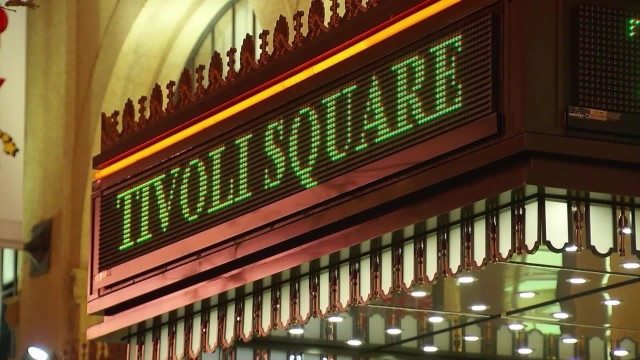For this week’s installment of Urban Voices, we’re taking you to the movies. “Tryouts” is the story of a Muslim girl rejected from the cheerleading tryouts at her school because she wears a headscarf.
The main character struggles with the demands of her heritage and a society that does not always embrace its minorities, and yet manages to solve this tension on her own.
The award-winning short film by artist Susana Casares was part of the Nueva Ola Film Festival held recently at the old Tivoli Movie Palace, in Washington D.C. The director was in attendance: “The whole reason that I make movies is to start dialogues”, she said, explaining how her perspective as a Spanish woman living in the U.S. has been an intrinsic part of her work.

In its heyday, the Tivoli Movie Palace was the most sumptuous of its kind in the nation’s capital. Long abandoned and reborn with a new identity as a center for Hispanic Art, it certainly seems like a perfect fit for the film.
“We were like Gypsies,” says Hugo Medrano, co-founder of the Gala Hispanic Theater. The company did not have a permanent space in which to perform, so it kept wandering from place to place, generally around the Columbia Heights neighborhood.
Finally, in 2005, they inaugurated the Gala Hispanic Theater on the last floor of the Tivoli Theater, which was fully renovated after several decades of neglect that almost led to its absolute destruction. The venue was considerably downsized from its original capacity, 2,400 seats, to a meager 240, but the main architectural features were preserved, and the cultural purpose it served since its inauguration, in 1924, sustained.
Michael Wilkinson started taking pictures of the building in 2002, back when he digital cameras were not that common. He estimates he must have taken 15 rolls worth of pictures chronicling the reconstruction process. The new development included retail shops on street level, office spaces on the second floor, and a large supermarket in the back of the building, complete with a multilevel parking garage.
Up until this day, the Tivoli has managed to survive through changing times, race riots, decades of abandonment and finally gentrification. It continues to adapt, finding new identities as the neighborhood has also changed. Columbia Heights is no longer the affluent uptown neighborhood of the 1920, nor the centerpiece of African American urban culture it became in the 1960. It is a mixture of past and present, and also a glimpse into the future, as the process of urban renewal it’s undergoing has not come to an end.
Susana Casares’ twitter
https://twitter.com/susanacasares
Gala Hispanic Theater’s website
http://www.galatheatre.org/
Michael K. Wilkinson’s website
http://mkw1.com
Michael K. Wilkinson Flickr page
https://www.flickr.com/photos/windsorconsulting-dc/sets/72157650161859181/
 CGTN America
CGTN America
